To give it its full official name, it's "The Huntington Library, Art Collection, and Botanical Gardens," but we'll just call it The Huntington, and tell you that if you go nowhere else in the Los Angeles area, you won't lose by going there.
Port Moresby instantly and George G. after more reflection correctly identified it from the patchwork of indoor, outdoor and artistic clues. Garry RF came in third.
We came to it almost by accident, and hadn't really been aware of it before. After a 5:30 am arrival in LA by train, waiting for car rental to open, and a hearty breakfast, it was still only 9:30 am, and the museum we intended to visit that day opens at 11 a.m. Joan Googled museum hours and found that the Huntington opened at 10:30 and that we could walk in its gardens before that. Add an exhibit on Van Gogh and Friends—and we were off!
It's in San Marino, in Los Angeles County, sort of South Pasadena, in Los Angeles County, and behind a whole lot of winding streets full of mansions. Bright and sunny...not the Los Angeles of the valley of smog.
Deodar cedar from the Himalayas buries the ends of its lower branches in the soil to resist Himalayan winds
Our original plan to start with the art collections, housed in the Huntington Mansion and a series of separate gallery buildings, were short-circuited by the offer of a guided garden tour that would last 90 minutes...or more. It was more, and it was beautiful, as you can see from the pictures, of which many more didn't make it into this blog.
But let me digress a moment to talk about how this all got there. I hate to sound like I'm biting the hand that feeds me such beautiful places, but I belong squarely in the 99% and the charities of the 1% can be an irritant, even when they are long ago. In this case, it's a story that involves some of the biggest fortunes of the 19th century.
When Huntington died in 1900, his fortune went to his widow, Arabella, and management of the family's holdings went to his nephew, Henry E. Huntington, who was no slouch at making money himself. He also put a great deal of effort into philanthropies and art collecting, interests shared by his Aunt Arabella, who was actually a year younger. They eventually married, in 1913.
The mansion and grounds we see today were built for their use when they happened to be in California, which was mainly when weather was bad in Paris or New York, or Virginia. If you want to know what money buys...it may not be happiness, but it does include artificially heated lily ponds so you can see your favorite blooms even when they should be dormant.
The Gardens are arranged in various ways: by climate, by areas of the world, by variety, such as the Rose Garden, and themed areas such as the Shakespeare Garden. The area is so immense as to seem endless, and it's easy to lose track of where you've been...but really, is anyplace better than the one you've found yourself in? The Huntington is like that! Above, a view into the Japanese Garden from a shaded spot built of concrete fake wood railings, copied from a park in Arabella's beloved Paris.
The Huntington estate, which started at 500 acres, was a major shift; it was among the first signs of the state's most powerful turning from a focus on San Francisco to growing Los Angeles. In addition to the art collections, the Huntingtons put a lot of effort into the gardens and established the library in 1920, a few years before their deaths.
Did I mention cacti and succulents? There are so many more than I've ever seen that I'll be posting a blog just on them in a few weeks.
And what a library! It has over 7 million items, including rare books, photographs and prints. It has a Gutenberg Bible, manuscripts by Chaucer, Washington, Jefferson, Franklin and Lincoln, and Isaac Newton′s personal copy of his Principia Mathematica with annotations in his own hand. And seven drafts of Thoreau's Walden. And. And.
It all opened to the public in 1928, the year after Henry Huntington's death; Arabella died in 1924.
The art collections are rich, too. Including, of course, portraits of the rich. Huntington owned possibly the best collection of English portraits. There are the expectable Old Masters, but there are also many paintings that reflect areas not often examined, including American Impressionists such as Frederick Karl Frieseke and William James Glackens. Below, sentimental favorites of mine: Mary Cassatt's "Breakfast in Bed" and Frieseke's "Woman Seated in a Garden."
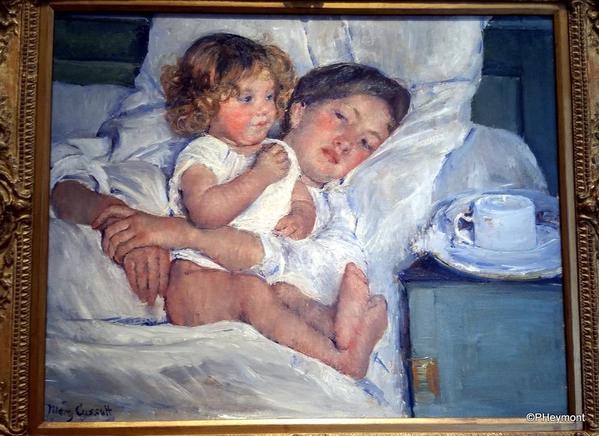
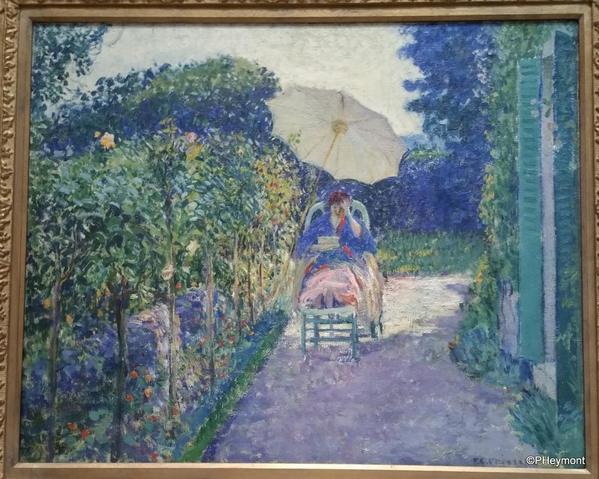
Hard work and a fascination with the crafts of an earlier era show in John George Brown's "Scraping a Deerskin," painted in 1904, when the leather trade was already industrialized. Below it, Luigi Lucioni's 1926 "Still Life" shows a 40-year head start on Andy Warhol in painting Campbell Soup cans.
Robert Spencer's 1913 "Three Houses" reflects a popular theme of early 20th-century American painters: City life. And last, but not least, from Reginald Marsh, a painter best known for pictures of city life and especially urban working-class leisure, a powerful picture of a locomotive, intended as a working model for a fresco mural commissioned for the Washington, D.C. post office.
As often happens, too many pictures! The 'slideshow' below contains a few more than I've shown above. And I'll close with one last image: not here for the flags, but for the flagpole. It's a 64' Douglas fir trunk, 48' from the ground up, and the other 16' driven into the ground!

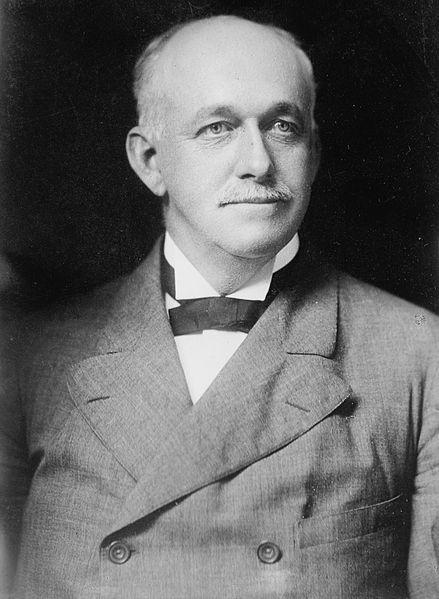
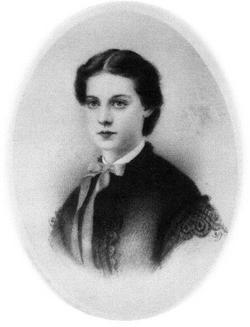
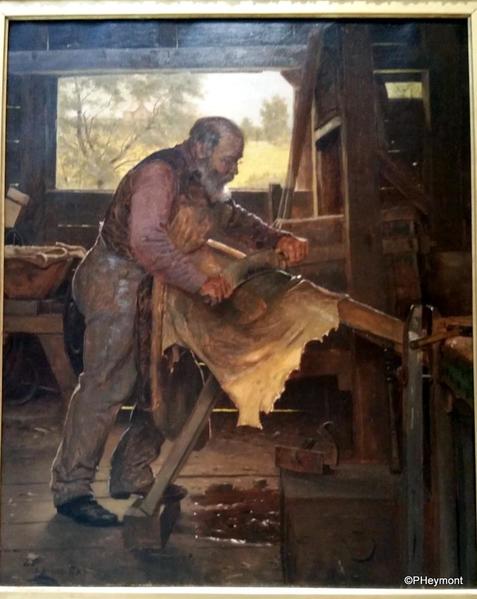
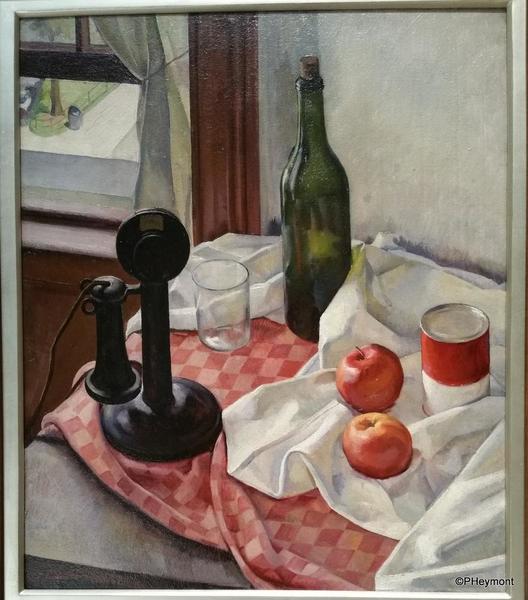
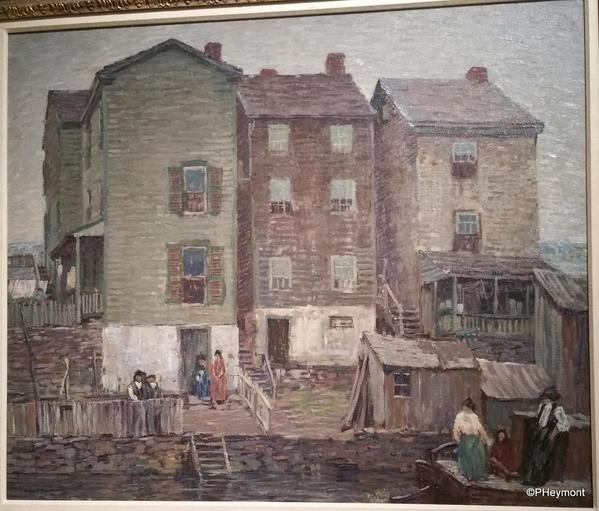






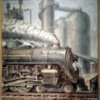


Comments (4)